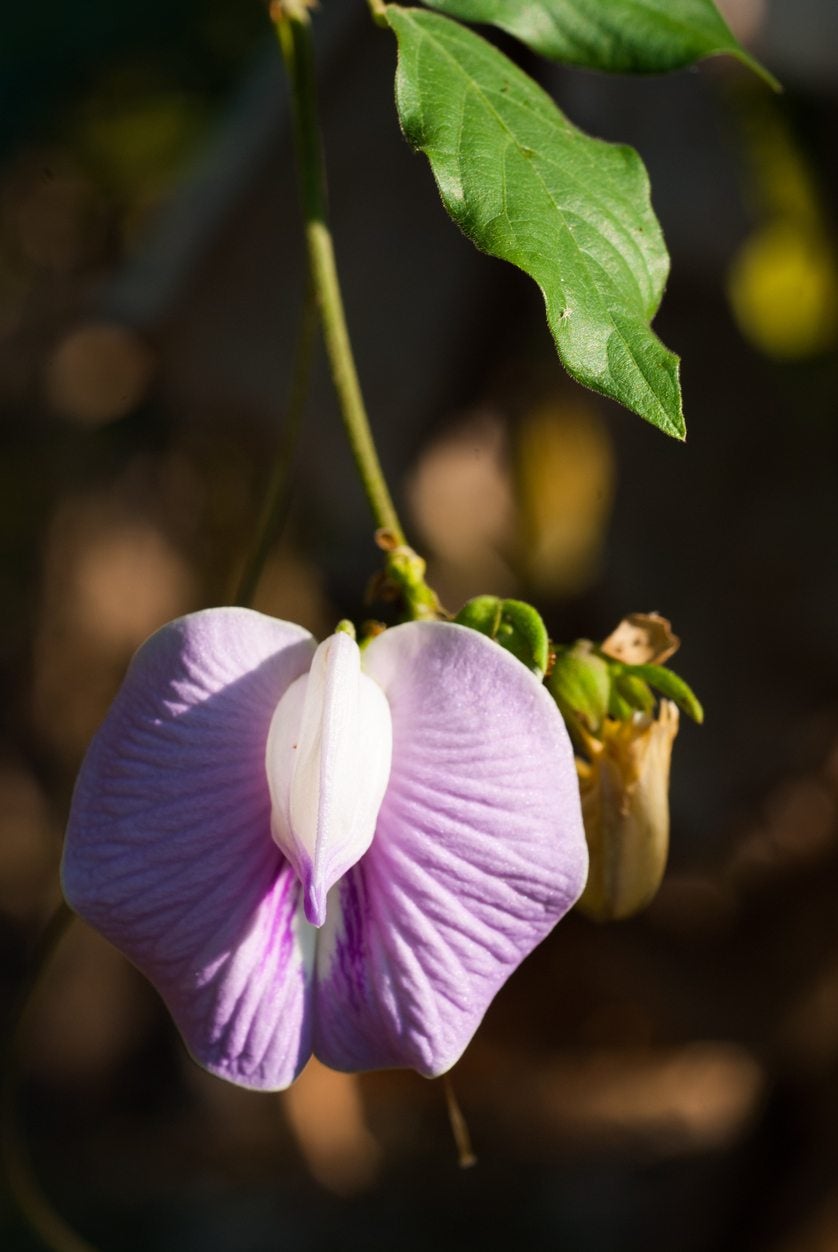What Is A Butterfly Pea Plant: Tips On Planting Butterfly Pea Flowers


What is a butterfly pea? Also known as spurred butterfly pea vines, climbing butterfly pea, or wild blue vine, butterfly pea (Centrosema virginianum) is a trailing vine that produces pinkish blue or violet blooms in spring and summer. As the name suggests, butterfly pea flowers are favored by butterflies, but birds and bees love them too. Centrosema includes about 40 species around the world, but only three are native to the United States. Read on to learn more about spurred butterfly pea plants.
Growing Spurred Butterfly Pea Vines
Spurred butterfly pea vines are suitable for growing in USDA plant hardiness zones 10 and 11, but you can grow the vines as annuals if you live in a cooler climate. Spurred butterfly pea plants are easy to grow from seed, either by planting directly in the garden in spring or by starting them indoors about 12 weeks ahead of time. Lightly nick or scrape the seeds, and then let them soak overnight in room temperature water before planting. Seeds generally germinate in two to three weeks. Butterfly pea flowers grow in nearly any type of soil, including nutrient-poor, but sandy, acidic soil is preferable. Good drainage is critical, as spurred butterfly pea plants won’t tolerate soggy growing conditions. Plant butterfly pea flowers where the vines have plenty of room to sprawl or let the delicate stems climb over a trellis or fence. This is an excellent plant for any lighting condition, including full sunlight, shade, or semi-shade.
Butterfly Pea Plant Care
Butterfly pea plant care is definitely uninvolved, and the plants require very little attention. Here are a handful of tips to ensure your spurred butterfly pea vines grow and bloom like crazy. Water the plant regularly during the first growing season but beware of overwatering. Spurred butterfly pea vines are drought tolerant and, once established, require supplemental irrigation only during periods of hot, dry weather. Pinch growing tips regularly to encourage bushy growth and prevent legginess. No fertilizer is required.
Gardening tips, videos, info and more delivered right to your inbox!
Sign up for the Gardening Know How newsletter today and receive a free copy of our e-book "How to Grow Delicious Tomatoes".

A Credentialed Garden Writer, Mary H. Dyer was with Gardening Know How in the very beginning, publishing articles as early as 2007.
-
 Looking For Plants To Give You The Soft And Fuzzies? Try These 5 Fuzzy Leaf Plant Options
Looking For Plants To Give You The Soft And Fuzzies? Try These 5 Fuzzy Leaf Plant OptionsLovers of texture, drama, silver foliage and tactile plants will adore these special sensory garden additions. These fuzzy leaf plant options will leave you all aglow
By Susan Albert
-
 Get Ready For A Summer Of Hummers! Grow These Full Sun Hummingbird Plants and Flowers
Get Ready For A Summer Of Hummers! Grow These Full Sun Hummingbird Plants and FlowersIf you’re lucky enough to enjoy a sunny backyard, make sure you are maxing out on your pollinator opportunities and grow these full sun hummingbird plants and flowers
By Tonya Barnett